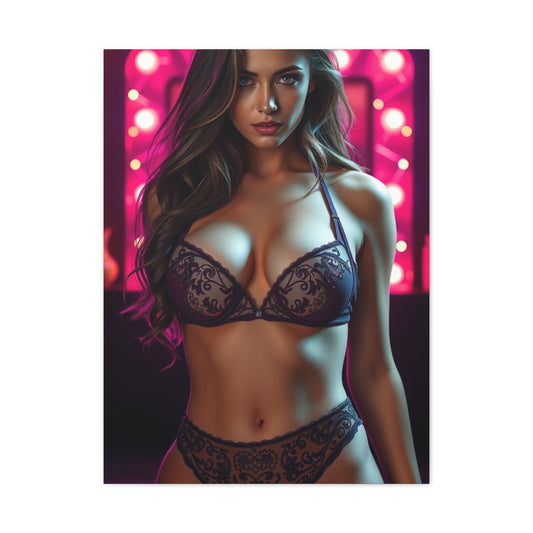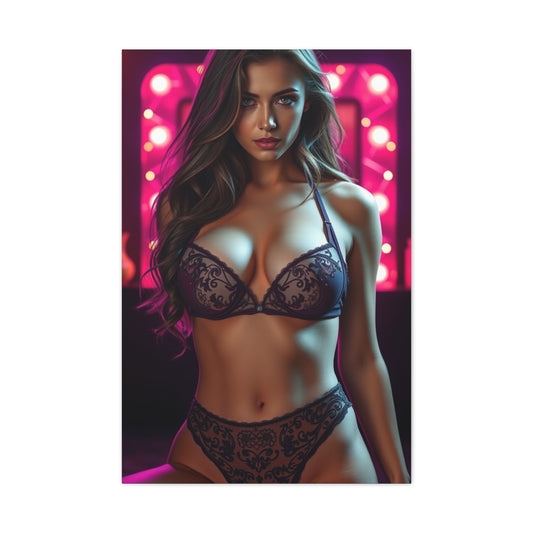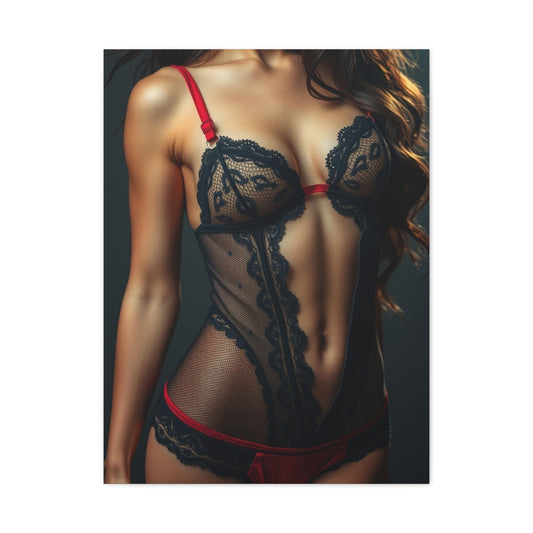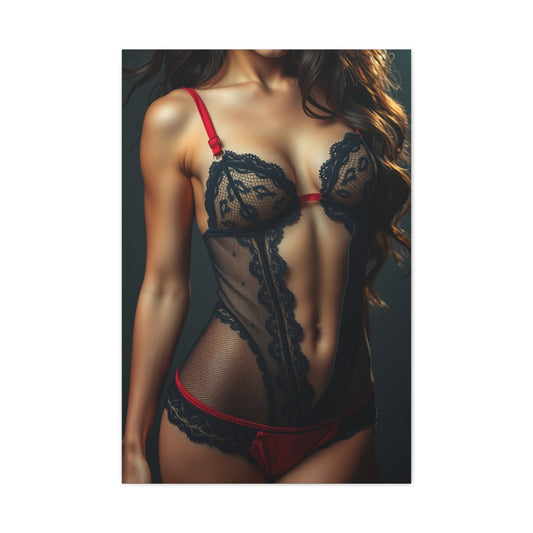A coffee table is far more than just a flat surface to place a cup of coffee; it is the centerpiece of a living room that brings style, function, and personality together. When selected thoughtfully, a coffee table anchors the space, creating a visual balance between the seating arrangement, rugs, lighting, and accessories. It acts as both a practical surface for daily living and a statement piece that reflects the homeowner’s taste. The ideal coffee table integrates seamlessly into the room, offering storage solutions, display space, and a touch of design flair. Understanding the different types of coffee tables, their materials, and their functionality is key to transforming a living space from ordinary to exceptional.
Wood coffee tables remain a classic choice due to their timeless appeal, versatility, and natural warmth. They are ideal for a wide range of interior styles, from rustic and bohemian to mid-century modern and Scandinavian minimalism. Dark woods like walnut or teak lend a rich, luxurious feel, creating depth and contrast against lighter flooring or upholstery. Lighter woods, such as oak or maple, bring an airy and welcoming vibe, perfect for open-concept living rooms and minimalist designs. Beyond aesthetics, wooden tables are durable and can withstand daily wear and tear, making them suitable for households with children or pets. Styling a wood coffee table can enhance its natural charm. Adding textured elements such as a knitted table runner, handcrafted ceramics, or small potted plants creates visual interest. Books, trays, and decorative objects provide functionality while maintaining a curated look, ensuring the table remains both practical and stylish.
Glass coffee tables offer a sense of lightness and transparency that can transform the perception of space in a room. They are especially effective in small living areas or open-plan designs, where visual flow and unobstructed sightlines are important. A glass table does not compete with surrounding décor; instead, it allows other design elements, such as rugs, sofas, or art pieces, to shine. Glass tables are available in a variety of shapes, including round, rectangular, and oval, making them adaptable to different room layouts. For example, a round glass table softens angular furniture arrangements and allows easy circulation, while a rectangular one provides symmetry in larger rooms. When styling a glass coffee table, simplicity is key. A small stack of books, a ceramic bowl, or a subtle candle can make the surface visually appealing without overwhelming the space. Pairing glass with contrasting materials like wood or metal adds texture and dimension while maintaining a light, modern aesthetic.
Marble coffee tables are synonymous with elegance and sophistication. The natural veining and polished finish of marble bring a sense of luxury to any living room. White Carrara marble exudes classic refinement, while darker marbles like black Marquina make a bold design statement. Marble tables are versatile, working well with both contemporary and traditional interiors. Beyond their aesthetic appeal, some marble coffee tables incorporate functional features such as lift-top surfaces or storage compartments, allowing homeowners to store remotes, coasters, or reading materials discreetly. Styling marble tables requires balancing their sleek, cool surface with softer textures in the room. Incorporating textiles such as wool throws, linen cushions, or boucle armchairs can soften the visual impact of marble while enhancing the overall cozy feel. Metallic accents, such as trays, candleholders, or sculpture pieces, complement the polished surface and add subtle opulence.
Nesting coffee tables are ideal for flexible living spaces where adaptability is essential. These stackable or tiered tables provide additional surfaces when needed and can be neatly tucked away to free up floor space. Nesting tables are perfect for small apartments or multipurpose rooms, offering a practical solution for hosting gatherings, enjoying meals, or working from home. They also allow creative arrangements—tables can be positioned together for a large central surface or separated to create intimate corners for reading or coffee breaks. Materials for nesting tables range from wood and metal to glass and marble, enabling them to blend seamlessly into different interior styles. Styling nesting tables can be playful and dynamic. Layering objects of varying heights, such as a tall vase with flowers on one table and a stack of books or a candle on another, creates a visually engaging composition while keeping the layout functional.
Rattan coffee tables offer a natural, textural element that adds warmth and a relaxed vibe to interiors. Perfect for bohemian, tropical, or coastal-themed spaces, rattan tables are lightweight, airy, and visually inviting. Their woven structure introduces organic patterns and a tactile quality that contrasts beautifully with structured furniture pieces like sofas or upholstered chairs. Styling rattan tables involves embracing a mix of textures. Pairing them with cushions, rugs, and greenery enhances their casual, approachable aesthetic. Rattan also works well with contemporary elements, providing a balance between organic softness and modern minimalism. This material brings a sense of craftsmanship and hand-made authenticity, adding depth and personality to the living room.
Square coffee tables provide a sense of structure and symmetry, making them ideal for rooms with sectional sofas or paired seating arrangements. Their geometric form anchors the furniture layout and creates a balanced focal point for conversation areas. Square tables are versatile and can be designed with or without storage, featuring drawers, shelves, or open compartments to accommodate everyday items. A well-styled square coffee table can incorporate a combination of decorative objects such as brass trays, floating flowers, or artisan-made bowls. Maintaining a clean, organized surface while layering texture ensures the table remains functional without overwhelming the visual harmony of the room.
Choosing the right coffee table involves considering both scale and proportion. The table should typically be about two-thirds the length of the sofa and aligned with the seating height for comfort and accessibility. Round tables enhance circulation in tight spaces, while square or rectangular tables emphasize symmetry and structure in larger rooms. Functionality should be considered alongside aesthetics. Tables with storage compartments, lift-top surfaces, or nesting capabilities provide practical solutions for organization and space management. Material selection should complement the room’s flooring, upholstery, and overall design palette. Wood adds warmth and grounding, glass maintains openness and transparency, marble contributes elegance and luxury, rattan introduces texture and casual charm, and nesting tables offer adaptability. By combining these considerations, homeowners can select a coffee table that is both beautiful and purposeful.
Ultimately, the coffee table serves as a visual and functional anchor for the living room, connecting furniture, décor, and lifestyle. It provides a surface for everyday activities, offers storage solutions, and becomes a canvas for styling and creativity. A thoughtfully chosen coffee table transforms the living space, reflecting personal taste while enhancing comfort and usability. Whether selecting a wooden table for warmth, a glass table for transparency, a marble table for luxury, or a nesting or rattan table for flexibility, the right piece elevates the room’s aesthetic and creates a hub for social interactions, relaxation, and daily life.
A well-selected coffee table is both a design statement and a practical centerpiece. Its form, material, and functionality influence the room’s flow, comfort, and overall appeal. Integrating a coffee table with other design elements, including sofas, rugs, lighting, and accessories, ensures cohesion and balance. Beyond its utility, a coffee table provides opportunities for personalization, allowing homeowners to display objects, style arrangements, and experiment with texture and color. Whether hosting guests, enjoying quiet evenings, or using the table as a functional workspace, this piece becomes an essential component of living room design, marrying aesthetics with practicality in a way that transforms the space.
Understanding Materials and Styles to Elevate Your Coffee Table Selection
Choosing the perfect coffee table goes beyond picking a shape or color; it involves understanding materials, finishes, and styles that align with your lifestyle and home decor. The material of a coffee table not only defines its aesthetic appeal but also impacts durability, maintenance, and how well it integrates with other furnishings. By exploring the options available and analyzing the interplay of textures, colors, and structural designs, homeowners can make an informed choice that balances functionality with elegance.
Wood remains one of the most popular coffee table materials due to its versatility, warmth, and timeless appeal. Different types of wood, from hardwoods like oak, walnut, and teak to softwoods such as pine or birch, each carry distinct characteristics that influence their look and performance. Hardwoods are typically more durable, resistant to scratches, and capable of supporting heavier items, making them ideal for families with children or busy living spaces. Softwoods are lighter and often more affordable, but they may dent or scratch more easily. The finish applied to wooden coffee tables also plays a crucial role. A natural matte finish preserves the wood’s organic texture, creating a rustic, earthy feel, whereas polished or lacquered surfaces provide a sleek, contemporary appearance that complements modern interiors. Layering wooden tables with soft textiles, such as handwoven rugs or knitted throws, enhances the tactile quality and provides visual balance, creating a cozy and inviting atmosphere.
Glass coffee tables are prized for their minimalistic appeal and ability to maintain a sense of openness in any room. Clear or tempered glass tops allow furniture and decor beneath to remain visible, enhancing the spatial perception and making the living area feel larger. Glass tables can be combined with a variety of bases—wood, metal, or acrylic—allowing homeowners to create contrasting textures and dynamic visual interest. Round glass tables soften angular layouts, ideal for high-traffic spaces, while rectangular or oval shapes provide symmetry and a sense of order. Careful styling with decorative objects, such as small sculptures, books, or candles, ensures the table remains functional while avoiding clutter. For practical use, tempered glass offers durability and resistance to breakage, making it a safe and reliable choice for homes with children or pets.
Marble coffee tables introduce a level of sophistication and luxury that elevates any living room. Known for its natural veining and cool, polished surfaces, marble adds both elegance and visual weight to a space. Lighter marble shades, such as Carrara or Calacatta, offer a classic, airy look, while darker stones, like Nero Marquina, create a dramatic focal point. Marble’s dense structure makes it durable, although it can be prone to staining or scratching, so care must be taken with coasters or protective mats. Combining marble with other materials, such as brass legs, wooden bases, or metal accents, enhances its luxurious feel while providing structural support. Styling a marble coffee table with soft textiles, fresh greenery, or decorative trays creates a balanced composition that softens the stone’s rigidity while maintaining a high-end aesthetic.
Nesting tables provide flexibility and adaptability, making them perfect for modern, dynamic living spaces. Often designed in sets of two or three, nesting tables can be arranged together for a larger surface or separated to create intimate corners for casual seating, tea breaks, or reading areas. Materials for nesting tables vary widely, including wood, metal, marble, or combinations thereof, allowing homeowners to match the design with the surrounding decor. The modular nature of nesting tables makes them ideal for small apartments or multi-use rooms, where maximizing space without compromising style is essential. When styling nesting tables, layering objects of different heights—such as a vase, a small sculpture, and a stack of books—adds visual interest and emphasizes the flexibility of the design.
Rattan and wicker coffee tables bring texture, warmth, and a natural aesthetic to interiors. These materials are particularly suited for bohemian, coastal, or tropical-inspired spaces, introducing a tactile, hand-crafted quality that contrasts beautifully with modern furnishings. Rattan tables are lightweight, easy to move, and visually airy, making them a practical choice for sunrooms, lounges, or casual living areas. They pair well with soft textiles like cushions, throws, and rugs, which balance the woven texture and create a cozy, inviting environment. Combining rattan with contrasting elements, such as metal or glass accents, can add dimension and prevent the natural texture from feeling too rustic or casual.
Metal coffee tables, often crafted from steel, iron, or brass, provide a contemporary or industrial aesthetic. Sleek metal frames are perfect for minimalist interiors, offering a light, structured form that enhances modern designs. Industrial-style metal tables often feature a mix of metal and wood, adding rugged charm and character to a space. Metals are highly durable, resistant to wear and tear, and require minimal maintenance, making them ideal for high-traffic areas. Styling metal tables with natural elements, such as wooden trays, potted plants, or woven textiles, softens the starkness of the material while maintaining the industrial appeal.
Shape and size are equally important in determining the suitability of a coffee table. Round tables encourage flow and movement in smaller or high-traffic rooms, minimizing sharp edges while creating a welcoming feel. Square tables provide symmetry and structure, particularly effective in larger rooms or when paired with sectional sofas. Rectangular tables offer a practical surface for multiple users or elongated seating arrangements, while oval tables combine the functional benefits of rectangular designs with softer lines for a harmonious aesthetic. Selecting the right proportion is essential: the table should generally be about two-thirds the length of the sofa and aligned with seating height to ensure accessibility and visual balance.
Functionality must always be integrated into the design decision. Lift-top coffee tables, storage compartments, and drawers offer practical solutions for living rooms that require organization and clutter management. These features enable homeowners to store remote controls, books, magazines, or other daily-use items discreetly, keeping the surface clean while maintaining visual appeal. Open shelves and multi-tiered tables allow for both display and storage, creating layers that add depth and personality to the space. Combining storage functionality with aesthetic considerations ensures that the table remains both beautiful and practical.
Ultimately, selecting the right coffee table requires a holistic approach that balances material, style, functionality, and scale. By analyzing the interplay of textures, shapes, and surfaces, homeowners can identify a table that complements their existing décor while fulfilling lifestyle needs. The coffee table serves as both a visual anchor and a functional hub, hosting everything from social gatherings to quiet reading sessions, from coffee breaks to family game nights. Its design reflects personal taste, supports daily activities, and contributes to the room’s overall ambiance.
From warm wooden tables and elegant glass surfaces to luxurious marble, flexible nesting sets, rattan textures, and industrial metal designs, coffee tables are versatile elements that define the style, functionality, and personality of a living space. When chosen thoughtfully, a coffee table transforms the living room into a cohesive, stylish, and functional area that enhances comfort, facilitates social interaction, and serves as a canvas for creative expression. A well-curated coffee table is the intersection of beauty and utility, reflecting both the homeowner’s lifestyle and design sensibilities while remaining a practical centerpiece that anchors the living room.
Coffee Table Shapes and Their Impact on Living Room Dynamics
Selecting the right coffee table is not just about aesthetics; the shape of the table significantly influences the flow, functionality, and feel of a living room. Every table shape offers unique benefits, and understanding how each interacts with seating arrangements, room dimensions, and daily use is essential for creating a harmonious space. From round and square to rectangular, oval, and modular designs, the shape of a coffee table determines accessibility, circulation, and the overall atmosphere of your living area.
Round coffee tables are celebrated for their ability to encourage movement and fluidity within a room. Their lack of sharp edges makes them ideal for homes with children or pets, minimizing the risk of accidental bumps while providing a softer visual impression. Round tables excel in smaller living spaces or high-traffic areas where a central focal point is desired without obstructing circulation. In terms of interior design, round tables promote intimacy by allowing seating to naturally orient toward the center. This makes them perfect for conversation zones or cozy reading nooks. Styling a round coffee table can emphasize balance: a small stack of curated books, a decorative tray, and a centerpiece such as a vase or bowl can highlight its shape while keeping the surface functional. Layering textures like woven coasters, soft fabrics, or ceramic objects can enhance the tactile experience, ensuring the table feels lived-in rather than sterile.
Square coffee tables provide a sense of structure and symmetry that few other shapes can achieve. They work exceptionally well in rooms with symmetrical seating layouts, such as sectional sofas or pairs of armchairs, creating a bold central point that anchors the room. The equal sides of a square table facilitate equal access from all sides, making it practical for shared spaces, games, or social gatherings. In design terms, square tables bring a sense of order and grounding, especially in living rooms where visual balance is key. Styling a square table often involves layering elements of varying heights—stacked books, a sculpture, and a plant, for instance—to create depth while maintaining a clean, organized appearance. Square tables also pair well with geometric rugs or symmetrical lighting, further emphasizing their architectural appeal.
Rectangular coffee tables are highly functional, particularly in larger living rooms or elongated seating arrangements. Their extended surfaces offer ample space for multiple users, making them ideal for family rooms, entertaining, or co-working setups. Rectangular tables provide structure and proportion, often complementing sofas with linear layouts and offering convenient surfaces for trays, drinks, or decorative accents. From a stylistic perspective, rectangular tables can balance asymmetrical furniture arrangements or provide contrast to rounded chairs or curved sofas. The styling possibilities are extensive: a long tray with candles, books, and a small plant can create a visually cohesive centerpiece, while a minimalist approach keeps the table surface open for daily use. Rectangular tables also lend themselves to multifunctional designs, including lift-top or modular configurations that maximize storage without sacrificing elegance.
Oval coffee tables combine the functionality of rectangular tables with the soft lines of a round design. They offer an elegant solution for spaces that require the length of a rectangular table but desire the fluidity and gentle curves of a round table. Oval tables enhance movement around the seating area, preventing corners from interrupting traffic flow while maintaining visual continuity. They are particularly well-suited for elongated living rooms or spaces where a curved aesthetic complements the surrounding decor. Styling an oval coffee table involves emphasizing its curves: elongated trays, artful centerpieces, or layered textiles can highlight its organic form, while accessories with complementary shapes reinforce the harmonious aesthetic. The oval design naturally softens a room, making it feel welcoming and cohesive.
Modular and nesting coffee tables are increasingly popular due to their adaptability and multifunctional qualities. Nesting tables, in particular, offer flexibility by providing multiple surfaces that can be separated or stacked depending on the need. These sets are perfect for homes with variable layouts, small spaces, or multifunctional living areas. Modular designs allow homeowners to rearrange surfaces for different activities, from hosting guests to creating intimate reading corners. Styling modular tables often involves balancing decorative elements with practical functionality: one table can display artful decor, while another remains free for everyday use. The key is to embrace versatility while maintaining visual cohesion, ensuring that the tables complement the overall design rather than appearing disjointed.
A coffee table also impacts spatial perception and room dynamics. Round and oval tables visually open a space, encouraging circulation and creating a relaxed, organic feel. Square and rectangular tables emphasize structure, grounding the room and providing clear focal points for furniture alignment. Nesting or modular tables introduce adaptability, enabling homeowners to tailor the room to various needs while maintaining aesthetic continuity. The choice of shape should consider the existing furniture arrangement, traffic flow, and room dimensions, ensuring that the table enhances both functionality and style.
Ergonomics and accessibility are critical when selecting a table shape. The table’s height should align with the seating to facilitate comfortable use, typically slightly lower than the sofa seat height. The surface area must accommodate everyday needs, such as drinks, remote controls, or books, without overwhelming the space. Shape determines how easily users can reach items from different angles, so round tables offer equal accessibility from all sides, while rectangular or square tables provide extended surfaces for multiple users. Proper proportion ensures that the table remains harmonious with seating arrangements, preserving flow and visual balance.
Styling considerations for coffee tables are closely linked to shape. Round tables often benefit from centralized arrangements, while square and rectangular tables can support linear or symmetrical decor layouts. Layering textures, using decorative trays, or incorporating natural elements such as plants or stones can enhance the table’s presence while maintaining a functional surface. Mixing materials—such as pairing a glass top with a wooden or metal base—can further elevate the design, creating contrast and visual interest that aligns with the room’s style. The choice of shape should integrate seamlessly with these styling elements, allowing the table to become both a practical tool and a design statement.
Ultimately, understanding the impact of coffee table shapes on living room dynamics allows homeowners to make informed decisions that enhance both aesthetics and functionality. Shape influences circulation, accessibility, spatial perception, and decor possibilities, making it a fundamental aspect of interior design. By considering room size, seating layout, traffic flow, and personal lifestyle, one can select a table shape that balances beauty with utility. Whether opting for the soft curves of a round or oval table, the structured elegance of a square or rectangular piece, or the adaptability of modular sets, the coffee table becomes a versatile centerpiece that anchors the room while supporting daily activities.
The right coffee table shape harmonizes with furniture, decor, and the flow of the room, creating a balanced, functional, and visually appealing environment. Thoughtful consideration of proportions, accessibility, and styling ensures that the table complements the living space while reflecting personal taste. When selected with care, the coffee table transcends its functional purpose, transforming into a statement piece that enhances comfort, encourages social interaction, and elevates the overall interior aesthetic. The interplay of shape, material, and design ultimately defines the character of the living room, making the coffee table a central element in the creation of a stylish and functional home environment.
Coffee Table Materials and How They Transform Your Living Space
The material of a coffee table plays a pivotal role in defining the character, functionality, and ambiance of a living room. While shape determines flow and spatial dynamics, the choice of material impacts durability, texture, and aesthetic appeal. From natural woods to sleek glass, luxurious marble to casual rattan, each material brings unique qualities that influence both the look and feel of the room. Understanding the properties, advantages, and styling potential of different materials is essential for selecting a coffee table that harmonizes with your interior design while meeting everyday practical needs.
Wood is one of the most versatile and enduring materials for coffee tables, offering warmth, texture, and timeless appeal. Its natural grain patterns and variations create a sense of depth and character, making each piece unique. Dark woods like walnut or teak bring a sense of richness and solidity, perfect for traditional or mid-century interiors, while lighter woods such as oak, ash, or maple convey openness and airiness, ideal for Scandinavian or minimalist spaces. Wood’s tactile quality adds comfort and grounding, making the coffee table a welcoming centerpiece. From a functional perspective, solid wood is durable and resilient, capable of withstanding daily use, spills, and weighty objects without compromising its structural integrity. Styling wooden tables often involves layering textures and finishes to enhance their natural beauty. A linen runner, a few ceramic accents, or a woven basket can complement the wood’s tones and introduce visual interest while keeping the table practical for everyday use.
Glass coffee tables are celebrated for their transparency, lightness, and ability to visually expand a space. They are particularly well-suited for small rooms or open-plan layouts where preserving a sense of openness is critical. Glass surfaces create a reflective quality that enhances natural light and allows the surrounding furniture and decor to remain the focal point. The choice of glass can vary from clear and pristine to smoked, frosted, or tinted, each producing a different ambiance. Glass tables are often paired with metal or wood bases to combine structure with lightness, creating a balanced aesthetic. In terms of styling, glass tables benefit from minimalistic arrangements: a single sculptural object, a neat stack of books, or a sleek tray can maintain the table’s airy and unobtrusive nature. Careful consideration of surface maintenance is required, as fingerprints, dust, and smudges can easily accumulate, but this is often a small trade-off for the visual benefits they provide.
Marble coffee tables exude luxury, sophistication, and timeless elegance. Their natural veining, color variations, and polished finishes immediately elevate a room, adding drama without overwhelming the existing decor. Marble is available in a range of shades—from crisp whites and subtle creams to deep blacks and striking greens—allowing homeowners to select a piece that complements their color palette. The material is not only visually stunning but also durable and heat-resistant, making it practical for hosting drinks or decorative objects. Marble tables pair beautifully with soft furnishings, metallic accents, or natural fibers, offering a tactile and visual contrast that enriches the living room experience. Styling a marble coffee table involves balancing its cool, sleek surface with softer textures and organic elements, such as a woven rug, plush cushions, or wooden trays, ensuring the table feels integrated and harmonious rather than stark.
Rattan and wicker coffee tables introduce a relaxed, natural aesthetic, ideal for bohemian, coastal, or tropical-inspired interiors. These materials are lightweight, textural, and versatile, providing a casual elegance that contrasts with heavier furniture or sleek architectural lines. Rattan’s flexibility allows for various shapes and designs, from low, round tables to rectangular trays with intricate weaving patterns. These tables are not only visually appealing but also functional, as their open weaves can incorporate storage or decorative baskets. Styling rattan tables often involves layering natural elements, such as indoor plants, textured throws, or ceramic vessels, enhancing the organic feel and creating a cozy, grounded environment. Their lightweight nature also makes them adaptable for different room configurations or outdoor-indoor living spaces.
Metal coffee tables offer a modern, industrial, or minimalist edge, depending on the finish and design. Steel, brass, aluminum, or iron can form the base, frame, or even the tabletop, creating sturdy and visually striking pieces. Metal’s reflective quality can bring a subtle sheen and contemporary feel, while darker tones like black or bronze add drama and contrast. Metal tables are highly durable, resistant to scratches, and easy to maintain, making them practical for high-traffic living areas. Pairing metal with wood or glass introduces texture and warmth, preventing the space from feeling too cold or austere. In styling, metal tables can serve as platforms for decorative vignettes, holding sculptural pieces, candles, or books while maintaining an industrial-chic vibe.
Mixed-material coffee tables combine the best qualities of different surfaces and bases to create unique, multifaceted pieces. A marble top with a metal frame, a wooden tabletop with glass insets, or a rattan surface with wooden legs can produce a visually dynamic and versatile coffee table. These combinations allow for greater design flexibility, ensuring that the table complements a wide range of interior aesthetics. Mixed-material tables can be styled to highlight contrast or cohesion: a metal-and-marble table might pair with soft fabrics and warm wood accents to balance cold and warm elements, while a wood-and-glass combination can emphasize lightness and airiness while retaining natural texture.
Functionality and maintenance are also crucial when considering materials. Wood requires periodic polishing or treatment to prevent warping, staining, or scratches, but its longevity often outweighs the upkeep. Glass needs regular cleaning to maintain clarity, while marble benefits from sealants to prevent staining or etching. Rattan is sensitive to moisture and requires occasional dusting, whereas metal is highly durable and low-maintenance. Choosing the right material depends on daily use, household members, lifestyle, and personal preference.
Ultimately, the material of a coffee table influences not just aesthetics but also usability, tactile experience, and spatial perception. Wood brings warmth and grounding, glass enhances openness and light, marble adds sophistication and luxury, rattan introduces texture and casual elegance, and metal provides durability and modernity. Mixed-material designs offer a creative solution for combining benefits while introducing visual complexity. Selecting a material that complements the room’s overall decor, seating, and function ensures that the coffee table is not only a centerpiece but also a practical and enjoyable piece of furniture.
When designing a living room around a coffee table, the chosen material can dictate the styling choices, furniture coordination, and even the perceived size of the room. Wood, marble, and rattan tables encourage natural textures and layering, while glass and metal lean toward minimalism and visual lightness. Mixed materials allow homeowners to blend aesthetics and function, resulting in a table that is uniquely tailored to their lifestyle. Thoughtful consideration of the material ensures durability, usability, and design harmony, making the coffee table a vital and versatile component of the living space.
The right coffee table material transforms a living room, balancing function with beauty. By evaluating durability, tactile quality, aesthetic appeal, and maintenance, homeowners can select a table that enhances comfort, supports daily activities, and integrates seamlessly with the surrounding decor. Each material carries its own story, mood, and practical advantages, ensuring that the coffee table becomes a statement piece that reflects personal taste while fulfilling the room’s functional needs. The material is not just a surface—it shapes the experience of the living space, inviting interaction, adding texture, and anchoring the room’s design.
Coffee Table Shapes and How They Influence Room Dynamics
The shape of a coffee table is just as important as its material when it comes to defining the functionality, flow, and visual appeal of a living room. Different shapes interact with the surrounding furniture, affect traffic patterns, and even influence how the space feels overall. From the classic rectangular table to the versatile nesting set, understanding how shapes impact usability and aesthetics ensures that the coffee table complements both lifestyle and interior design.
Rectangular coffee tables are perhaps the most traditional and versatile option. They provide a substantial surface area, making them ideal for larger living rooms or spaces where the table must accommodate multiple functions, such as holding drinks, snacks, decorative items, and books. Rectangular tables pair exceptionally well with long sofas, sectionals, or parallel seating arrangements. The linear design helps anchor the room, creating a sense of order and balance. Styling a rectangular coffee table can involve layering with trays, books, vases, or candles, creating visually organized zones while maintaining functionality. Rectangular shapes are also practical for families or entertaining spaces because they maximize usable surface area without obstructing movement.
Square coffee tables offer symmetry, structure, and a bold presence. Their equal sides make them excellent for rooms with balanced or symmetrical seating arrangements. They work particularly well with sectional sofas arranged in an L-shape or with chairs placed equidistantly around the table. Square tables create a visual anchor, helping ground the space and encouraging interaction among occupants. Because of their geometric clarity, they are often used as platforms for curated displays, from stacks of books to decorative trays and bowls. Square coffee tables also facilitate easy reach from all sides, making them practical for shared living spaces where multiple people use the table simultaneously.
Round coffee tables introduce softness, flow, and a welcoming aesthetic. Their lack of sharp edges makes them ideal for households with children or tight spaces, as they minimize the risk of accidents while enhancing movement around the table. Round tables promote conversational intimacy because their curved edges naturally draw people together. They pair beautifully with curved sofas or armchairs, creating a harmonious visual rhythm. Round coffee tables are particularly suited to smaller rooms or open-plan spaces because their soft lines prevent visual heaviness, giving the area an airy, light feel. Styling a round table often involves layered textures, such as a woven rug, a ceramic bowl, or a small plant, emphasizing a balanced and inviting look.
Oval coffee tables combine the advantages of round and rectangular tables, offering soft edges while maintaining elongated surfaces. They are ideal for narrow spaces, long sofas, or areas that require a gentle flow and unobtrusive presence. Oval tables create a sense of movement and continuity, guiding the eye naturally through the room. Their elongated shape provides ample surface area without the rigidity of a rectangular table, making them flexible for both small and mid-sized living rooms. Styling an oval table can involve asymmetrical arrangements, such as placing a small decorative tray at one end and a tall vase at the other, achieving visual interest without clutter.
Nesting coffee tables are a dynamic option for flexibility and adaptability. These sets typically consist of two or more tables that fit under each other when not in use, but can be separated for additional surface area as needed. Nesting tables are perfect for compact spaces or multifunctional rooms because they allow homeowners to expand or condense the surface area on demand. Their versatile arrangement can create intimate seating corners, hold multiple items during gatherings, or provide temporary workspace solutions. Styling nesting tables can be playful: each table can hold a distinct decorative element, such as a candle, a plant, or a stack of books, creating layered visual depth while maintaining functionality.
Lift-top and adjustable coffee tables offer a unique blend of form and function. While technically defined by mechanics rather than shape alone, these tables often come in rectangular, square, or even round forms. Lift-top tables elevate the tabletop to create a convenient work or dining surface, while hiding storage underneath. This dual functionality makes them perfect for small apartments, home offices, or multi-use living rooms. When styling lift-top tables, consider keeping surfaces minimal when lowered to prevent visual clutter, while using the hidden compartment to store everyday items such as remote controls, coasters, or magazines.
Irregular, organic, and sculptural shapes are gaining popularity as coffee tables become statement pieces in contemporary interiors. Tables with asymmetrical silhouettes, curved edges, or abstract bases serve as focal points, blending art with function. These unconventional shapes challenge traditional layouts, encouraging creative furniture arrangements and personalized styling. Organic-shaped tables work particularly well in modern, eclectic, or bohemian spaces, where fluidity, texture, and visual interest are prioritized. Styling such tables can involve emphasizing contrast: a neutral organic table may be paired with bold rugs, textured cushions, or metallic accents to highlight its unique form.
Choosing the right shape for a coffee table requires consideration of both functionality and space dynamics. For long sofas or sectional arrangements, rectangular or oval tables provide balance and utility. For symmetrical seating or shared spaces, square tables promote harmony and accessibility. Round and organic shapes enhance flow, safety, and visual softness, ideal for open or high-traffic areas. Nesting and lift-top designs emphasize adaptability, enabling homeowners to adjust their space according to changing needs or social scenarios. Understanding these dynamics allows the coffee table to serve as both a practical surface and a design anchor, harmonizing the room’s flow and enhancing comfort.
The interaction between coffee table shape and surrounding furniture is critical for spatial cohesion. Rectangular and square tables establish clear lines and boundaries, grounding larger spaces, while round and oval tables encourage gentle circulation and a more organic feel. Nesting and lift-top designs prioritize multi-functionality without compromising design aesthetics. Sculptural or asymmetrical tables act as visual art pieces while maintaining their primary function as a surface. Proper proportion relative to seating ensures reachability and visual harmony, preventing the table from overwhelming the space or appearing too small.
Ultimately, the shape of a coffee table influences conversation dynamics, traffic flow, visual balance, and overall room harmony. Rectangular and square forms provide structure and symmetry, round and oval shapes create intimacy and softness, nesting tables offer versatility, and sculptural or organic designs add character and artistry. Selecting a shape involves evaluating the room’s size, furniture layout, circulation paths, and aesthetic objectives. By understanding how shape interacts with function and space, homeowners can choose a coffee table that not only serves practical purposes but also enhances the room’s style, flow, and livability.
A carefully selected coffee table shape anchors the living room, fosters connection, and supports everyday activities. The right choice ensures accessibility, maintains traffic flow, encourages social interaction, and complements the overall design narrative. Whether the goal is timeless structure, gentle flow, multifunctionality, or artistic impact, considering table shape is essential for creating a harmonious, functional, and aesthetically pleasing living space. The shape, when combined with thoughtful material choice, color palette, and styling, transforms the coffee table from a simple surface into a central element that elevates the entire room.
Coffee Table Functionality and Lifestyle Integration
Coffee tables are no longer just decorative elements; they have evolved into multifunctional pieces that reflect modern living needs. A coffee table’s purpose extends beyond holding cups and magazines—it can anchor social gatherings, support work-from-home setups, provide hidden storage, and even serve as a display platform for curated décor. Understanding how functionality intersects with lifestyle is key to selecting a table that not only complements your interior design but also enhances daily life.
Storage is one of the most practical features homeowners look for in a coffee table. Tables with drawers, shelves, or hidden compartments help maintain a tidy living room by keeping remote controls, coasters, magazines, and other essentials organized. Lift-top coffee tables elevate the functionality even further, offering hidden storage while transforming the tabletop into a work or dining surface. This dual-purpose feature is especially beneficial in compact homes where maximizing utility without compromising style is critical. For small apartments, nesting tables provide flexible storage and surface options; they can be expanded when entertaining guests or pushed together to free up floor space for activities like yoga, play, or cleaning.
The integration of lifestyle needs into coffee table selection extends to ergonomics. Tables must be proportionate to the surrounding furniture, ensuring comfortable access for all users. Height is particularly important: a table that is too low can strain the back when reaching for items, while one that is too high can disrupt the visual flow and seating comfort. Tables should also allow adequate clearance for knees and legs, especially in front of sofas or armchairs. Material choice impacts usability as well; durable surfaces like marble, wood, or tempered glass withstand daily use while maintaining visual appeal. Scratch-resistant finishes, easy-to-clean surfaces, and resilient bases contribute to long-term functionality without sacrificing style.
Social dynamics play a significant role in how coffee tables are used. In homes where entertaining is frequent, larger or expandable tables accommodate multiple guests, snacks, and drinks. Square or rectangular tables create communal zones, encouraging conversation and group activities. Round and oval tables foster intimacy, ideal for smaller gatherings or cozy living spaces. Nesting tables allow adaptability, enabling hosts to reposition surfaces to suit the number of guests or the type of activity. Coffee tables can also act as staging areas for décor that enhances the ambiance, such as floral arrangements, candles, or curated art pieces, turning everyday interactions into visually pleasing experiences.
Technology integration is another aspect shaping modern coffee table design. Homes increasingly require surfaces that accommodate devices like tablets, laptops, or smart speakers. Lift-top tables, tables with built-in charging ports, and modular designs ensure that electronics are accessible and functional without creating clutter. Concealed wiring or cable management channels help maintain a clean appearance while keeping devices ready for use. In multifunctional living rooms, the coffee table may serve as a secondary workspace or a hub for family activities, blending practicality with design sophistication.
Flexibility in coffee table functionality extends to outdoor and seasonal use. Tables made from lightweight, weather-resistant materials like rattan, aluminum, or treated wood can be moved between indoor and outdoor spaces, supporting gatherings on patios, balconies, or terraces. Nesting, folding, or modular tables further enhance adaptability, allowing homeowners to configure the space based on activity, occupancy, or seasonal décor. In addition, surfaces that are easy to wipe or treat ensure that the table remains practical across different environments while maintaining its aesthetic appeal.
A coffee table’s ability to integrate with lifestyle also involves aesthetic versatility. Tables that combine multiple materials—such as wood and metal, glass and stone, or rattan and marble—offer design flexibility that complements varied interiors. The table’s form can dictate function: a low, round table encourages lounging and casual interaction, while a taller, rectangular table supports structured seating and activities like board games or crafts. Curated styling enhances usability; a tray can corral small items, a stack of books can double as a riser for decorative elements, and open shelves provide both storage and display opportunities. These design strategies merge form and function, creating a table that serves daily life while reflecting personal taste.
Multi-user households benefit from coffee tables that accommodate different activities simultaneously. Families may use one side for work or study, another for play or hobbies, and still another for entertainment or display. Tables with sections, modular components, or removable surfaces allow each activity to have its own dedicated zone. This zoning minimizes clutter, maintains organization, and ensures that multiple users can interact with the table without conflict. A versatile coffee table encourages shared experiences while providing individual functionality, balancing household needs with design intent.
Coffee tables also influence room dynamics and movement. Round, oval, or compact tables enhance circulation in tight spaces, preventing obstruction and ensuring safe, comfortable flow. Rectangular or square tables anchor larger rooms, creating defined zones for seating and interaction. The placement of the table relative to sofas, chairs, and other furniture is crucial for maintaining accessibility and usability. A functional layout combined with a well-chosen table ensures that the room remains visually balanced, ergonomically sound, and conducive to the intended activities, whether lounging, entertaining, or working.
In addition to their daily function, coffee tables contribute to lifestyle-driven aesthetics. Curated styling transforms them into focal points that reflect individual personality and the broader interior design scheme. Decorative objects, seasonal accents, or minimalist arrangements turn the coffee table into an expression of taste and creativity. Simultaneously, functionality ensures that these aesthetic choices do not compromise utility. A table that accommodates décor while maintaining storage, flexibility, and accessibility bridges the gap between style and practicality.
A coffee table is often perceived as a simple, functional piece of furniture, yet in modern interior design, it has evolved into a central element that combines utility, aesthetics, and lifestyle functionality. Contemporary living demands more from furniture than ever before, and the coffee table exemplifies this evolution. No longer confined to holding a few books or beverages, it now serves as a hub for social interaction, a workstation for remote tasks, a storage solution for everyday items, and a visual anchor that unifies the design of the room. Understanding the multiple roles a coffee table plays is essential when selecting one for a modern living space.
The first consideration in choosing the ideal coffee table is its alignment with the household’s daily routines. Homes today are multifunctional, often blending work, leisure, and social activity within a single living area. A coffee table must support these diverse activities without compromising style. For instance, families who frequently entertain may require a larger surface area to accommodate drinks, snacks, and game boards. In contrast, a work-from-home setup may benefit from a lift-top or adjustable table that doubles as a workspace, offering both ergonomic support and sufficient surface area for laptops, notebooks, and office supplies. By carefully analyzing how the living room is used, homeowners can select a coffee table that actively supports these routines rather than serving as a purely decorative object.
Material selection plays a crucial role in the balance between aesthetics and functionality. Wood is one of the most versatile and enduring choices, offering warmth, character, and adaptability to various interior styles. Its natural grain and tones can range from light and airy to deep and dramatic, providing both visual appeal and tactile comfort. Glass, on the other hand, introduces transparency and lightness, making it ideal for smaller spaces or rooms where visual flow and openness are priorities. Glass tables do not visually obstruct other design elements, allowing furniture, rugs, and décor to maintain prominence. Marble surfaces exude elegance and sophistication, often serving as a statement piece that elevates the room’s overall aesthetic. Rattan and wicker tables bring texture and a natural, relaxed feel, connecting interiors to organic elements and creating a sense of calm within the space. The material choice not only reflects personal taste but also impacts durability, maintenance, and long-term usability.
The shape and proportion of a coffee table significantly influence its functionality and visual impact. Round and oval tables are excellent for softening corners and enhancing movement, particularly in compact spaces or rooms with high foot traffic. They encourage a more fluid and inviting environment, reducing the risk of injury from sharp corners while promoting conversation and interaction. Square and rectangular tables provide structure, symmetry, and visual balance, making them well-suited for larger rooms or sectional seating arrangements. The table’s height is another critical factor, ideally complementing the seating it accompanies. A table that is too high or too low disrupts ergonomics and can hinder comfortable use. Proper proportion ensures that the coffee table integrates seamlessly with surrounding furniture, maintaining both comfort and style.
Storage and adaptability are increasingly vital features in modern coffee tables. Drawers, shelves, hidden compartments, and lift-top mechanisms allow the table to serve multiple functions while reducing clutter. Storage options provide space for remotes, magazines, coasters, or other items that would otherwise accumulate on surfaces, keeping the living area tidy and organized. Nesting tables offer flexibility, allowing homeowners to expand surface areas when entertaining or consolidate them to free up floor space. Adjustable and modular designs accommodate evolving needs, enabling the coffee table to grow and change with lifestyle demands. This adaptability ensures that the piece remains functional over time while supporting both individual and group activities.
In addition to functionality, the coffee table serves as a visual anchor that enhances the overall design coherence of a room. It ties together sofas, chairs, rugs, and decorative accents, creating a sense of balance and unity. When styled thoughtfully, the table can act as a canvas for personal expression, with curated décor such as books, candles, vases, and art objects adding personality without overwhelming the space. The surface arrangement can be changed seasonally or for special occasions, providing a dynamic element that adapts to both lifestyle and aesthetic trends. The combination of practical utility and visual appeal ensures that the coffee table contributes meaningfully to the room’s identity.
Ultimately, the best coffee table is one that harmonizes utility and aesthetics while responding to the practical realities of modern living. It must be versatile enough to support daily routines, adaptable to changing needs, and visually compelling to anchor the room’s design. Whether the household prioritizes entertainment, work-from-home functionality, storage efficiency, or style impact, the right table integrates these considerations into a single, cohesive element. Attention to dimensions, shape, material, storage, ergonomics, and decorative styling ensures that the coffee table enhances the living space without compromising comfort or flow.
The modern coffee table is a multifunctional, design-forward centerpiece that reflects the evolving demands of contemporary lifestyles. It provides surface space for daily activities, storage for essential items, and a visual anchor that unifies the living room’s design. By carefully considering material, proportion, shape, storage, adaptability, and styling, homeowners can select a coffee table that complements their routines, expresses their personal style, and stands up to the practical demands of everyday life. A well-chosen coffee table is both functional and beautiful, elevating the living space and becoming an indispensable element of modern home design.
From multifunctional lift-top designs to flexible nesting sets, timeless wood, sleek glass, luxurious marble, or airy rattan tables, each choice reflects a commitment to style and lifestyle harmony. A coffee table that meets practical needs while contributing to the room’s aesthetic identity creates balance, flow, and convenience. It serves as a surface, a storage solution, a social hub, and a canvas for personal expression, seamlessly integrating function and design into everyday life. By prioritizing both lifestyle integration and aesthetic appeal, homeowners can transform the coffee table from a simple furniture piece into a cornerstone of living room functionality, style, and enjoyment.
Conclusion
A coffee table is far more than just a piece of furniture; it is the heart of a living room, a unifying element that brings together functionality, style, and personal expression. In modern homes, where space, design, and lifestyle needs are constantly evolving, choosing the right coffee table is a decision that impacts both daily living and the overall aesthetic of a room. Whether it serves as a hub for social gatherings, a functional workspace, a storage solution, or a decorative platform, the coffee table plays a central role in defining the ambiance and usability of the living space.
The perfect coffee table balances form and function. Its size, shape, and height must harmonize with surrounding furniture, ensuring comfortable access and smooth circulation. A table that is too tall or too low can disrupt seating ergonomics, while one that is too large can dominate the room and hinder movement. Similarly, its shape—whether round, square, rectangular, or oval—dictates both aesthetic balance and spatial flow. Round and oval tables soften corners and enhance movement in compact spaces, while square and rectangular designs provide symmetry and structure, anchoring conversation zones and creating a sense of groundedness in larger rooms.
Material selection is equally critical in crafting a coffee table that is both beautiful and functional. Wood, with its warmth and natural texture, lends a timeless charm that complements a variety of décor styles, from traditional to modern. Glass creates an airy, minimalist appeal, visually expanding small spaces and allowing other design elements to shine. Marble introduces a sense of luxury and sophistication, while rattan and wicker add texture and an organic, relaxed vibe. Contemporary designs often combine materials, such as glass tops on wooden bases or marble with metal accents, to achieve both visual contrast and practical resilience. Each material choice reflects not only aesthetic preferences but also lifestyle considerations, durability, and ease of maintenance.
Functionality extends beyond appearance and into practical usage. Storage options—such as drawers, shelves, or hidden compartments—help maintain a clutter-free environment, accommodating items like remotes, magazines, coasters, and personal belongings. Lift-top tables and modular designs further enhance utility, transforming the surface into a workspace or dining area without sacrificing style. Nesting tables provide flexibility for entertaining, expanding surface areas as needed, and creating adaptable arrangements that suit both social gatherings and individual routines. A functional coffee table anticipates the needs of daily life while seamlessly integrating into the overall design narrative of the living room.
Lifestyle integration is another defining aspect of a successful coffee table. Modern homes are multifunctional, often blending entertainment, work, and leisure in a single space. The coffee table must support these activities while maintaining visual harmony. Tables with built-in technology, such as charging ports or cable management channels, accommodate digital devices without creating clutter. Surfaces designed for casual meals, work sessions, or family game nights ensure that the table evolves alongside the household’s lifestyle. Additionally, tables can be styled to reflect personality and creativity, with curated décor, seasonal accents, or simple minimalist arrangements that highlight individuality while complementing the room’s overall design.
A thoughtfully chosen coffee table also enhances social interaction and family dynamics. In communal living spaces, it acts as a gathering point, encouraging conversation, collaboration, and shared experiences. The shape and size of the table influence how people interact, with larger tables supporting group activities and smaller or round tables fostering intimacy and connection. The versatility of modern designs—such as nesting or adjustable tables—ensures that the table can adapt to different scenarios, from casual lounging to formal entertaining, reinforcing its role as both a functional and social centerpiece.
Beyond its practical uses, the coffee table serves as a visual anchor that unites the room’s décor elements. It can balance the proportions of seating arrangements, create focal points, and establish symmetry or contrast within the interior design. When styled with intention, the table elevates the room’s aesthetic, allowing textures, colors, and materials to interact harmoniously. Decorative touches like trays, books, candles, vases, and small sculptures can transform a coffee table into an expressive platform that communicates personal taste while remaining functional. The combination of utility and artistry ensures that the table contributes meaningfully to both lifestyle and design.
Ultimately, a well-chosen coffee table embodies the convergence of style, practicality, and adaptability. It accommodates the dynamic demands of modern living while maintaining visual appeal and structural integrity. The ideal table supports daily routines, facilitates social interaction, adapts to space constraints, and complements the surrounding décor, creating a cohesive and enjoyable environment. By carefully considering dimensions, materials, shapes, storage options, and lifestyle needs, homeowners can select a coffee table that not only meets functional requirements but also reflects personality, enhances comfort, and anchors the living space with style and purpose.
Coffee tables are far more than utilitarian surfaces—they are central to the rhythm of modern living. From classic wood and elegant marble to space-saving nesting sets and multifunctional lift-top designs, each type offers distinct benefits, merging aesthetic appeal with practical function. Choosing the right coffee table requires thoughtful evaluation of form, function, material, and lifestyle integration. When selected with care, a coffee table becomes a versatile cornerstone of the living room, supporting daily activities, enhancing social connections, and reflecting the homeowner’s unique style. It is a piece that brings cohesion, comfort, and character to the home, proving that even the simplest furniture can make a profound impact on the way we live, interact, and experience our surroundings.
The right coffee table transforms a living room from ordinary to extraordinary, creating a space that is both functional and beautiful, practical and inspiring. It becomes a reflection of lifestyle, a platform for creativity, and a stage for daily life. By harmonizing material, design, and utility, homeowners can ensure that their coffee table is more than just a furnishing choice—it is the heart of the living room, the centerpiece of social gatherings, and a timeless addition that grows with the home, adding value, style, and enjoyment for years to come.




























